Prince Harry And Meghan Markle Storm ‘Bob Marley: One Love’ Premiere, Leaving The Entire Cast Awe Struck

In honor of the millions of lives lost in the Holocaust, one artist colorized Holocaust photos making them all the more real to us today

Monday, the 27th of January in 2020 was International Holocaust Memorial Day. A few countries honor the memory of Holocaust victims on different days, but for most of the world it is the 27th of January.
The other day, The Anti-Defamation League posted poll results on their Facebook page highlighting rising antisemitism in the United States and the comments ran rampant with... antisemitism. It almost sounds almost like we are in the midst of some sort of dystopian nightmare to think about.
On the contrary, though, every year for the Remembrance Day, people do amazing things to honor the millions of lives lost and destroyed maliciously and intentionally by the Nazi Regime.
For example, Tom Marshall is an artist who colorizes photos and this year he decided to tackle photos from The Holocaust.
"Children at Auschwitz, in a still from the Soviet film of the liberation of Auschwitz, January 1945."
It's 2020 and people today are still denying the atrocities of the Holocaust, so Tom's work could be of vital significance in helping people connect to the nearly unspeakable tragedy.
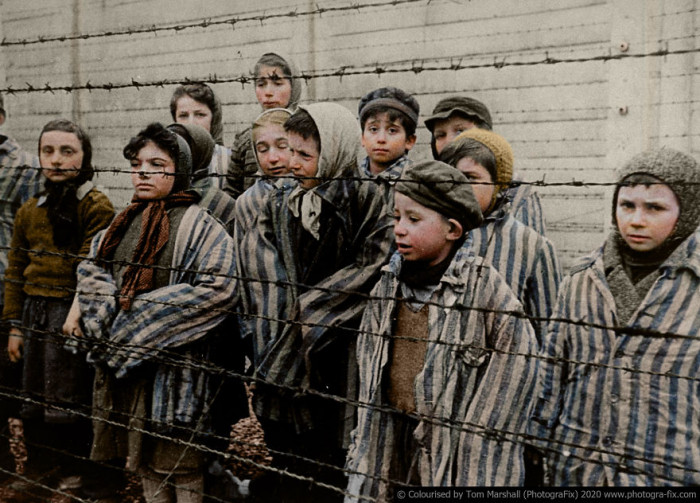 PhotograFixUK
PhotograFixUK"This photo shows starved prisoners, nearly dead from hunger, posing in a concentration camp in Ebensee, Austria.
Ebensee was a sub-camp of the main camp ‘Mauthausen’ near the town of the same name. The camp was reputedly used for “scientific” experiments. It was liberated by the 80th Division of the U.S. Army."
Tom says he chose these particular photos because they are from "the first few months of 1945, as the rest of the world became fully aware of the horrors of the Nazi holocaust."
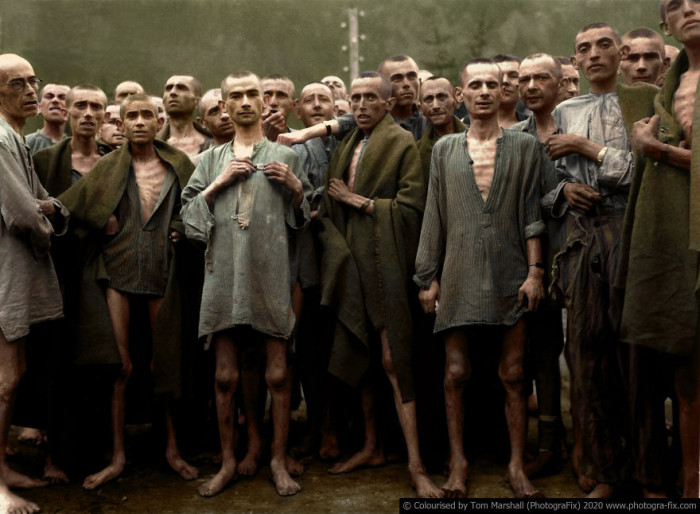
"Istvan Reiner, aged 4, smiles for a studio portrait, shortly before being murdered at Auschwitz concentration camp."
Each photo he chose was intentional and he applied meticulous detail with care to the victims depicted. He provided a title for each photo and a brief description of who and where the photos took place.
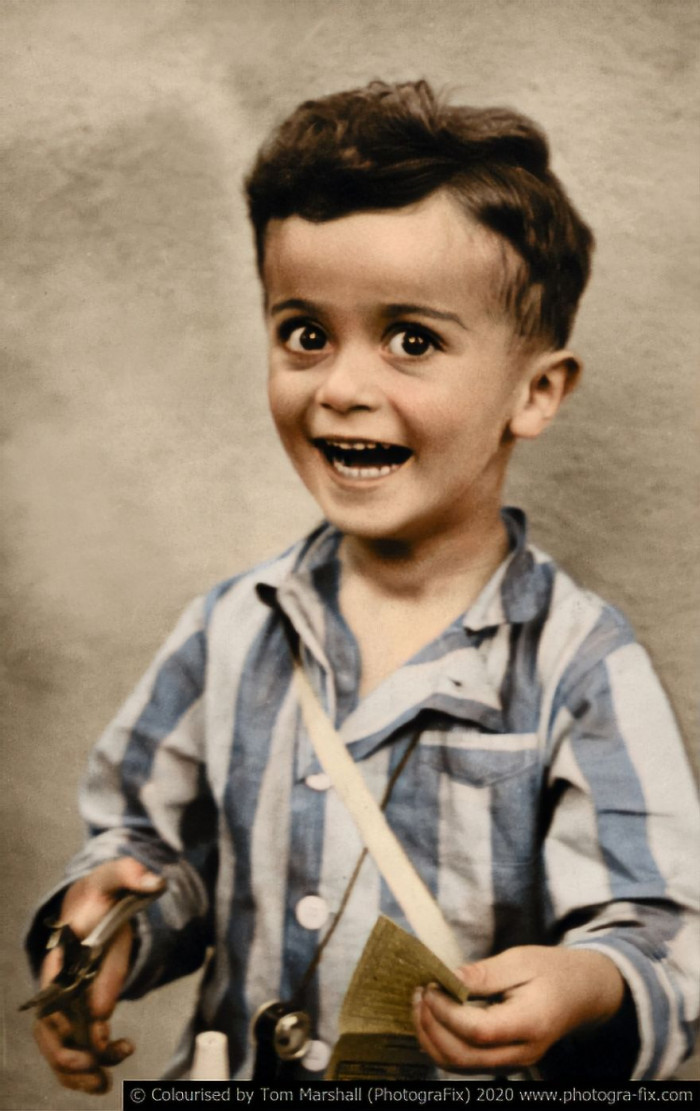 PhotograFixUK
PhotograFixUK"Two staring, emaciated men, liberated inmates of Lager Nordhausen, a Gestapo concentration camp. The camp had from 3,000 to 4,000 inmates. All were maltreated, beaten and starved."
What was it like working on a project like this? I can only imagine. I remember walking through the Holocaust Memorial Museum in Washington DC when I was 14, connecting so deeply to the pain emitting from every sight, texture, and sensation. Tom said:
"This was the most harrowing project I have ever worked on. I usually enjoy colourising photos as the process brings the subjects to life gradually, which is a satisfying experience. Still, with this project, it was upsetting as the images are so shocking."
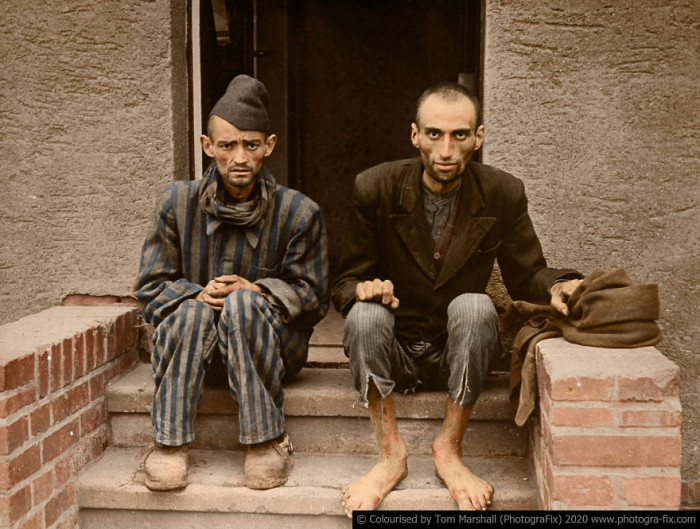 PhotograFixUK
PhotograFixUK"An 18-year-old Russian girl during the liberation of Dachau concentration camp in 1945. Dachau was the first German concentration camp, opened in 1933.
More than 200,000 people were detained between 1933 and 1945, and 31,591 deaths were declared, most from disease, malnutrition, and suicide. Unlike Auschwitz, Dachau was not explicitly an extermination camp, but conditions were so horrific that hundreds died every week."
Tom's words about the purpose of his project should not ring hollow in your mind: "They serve as a stark reminder of man’s inhumanity to man."
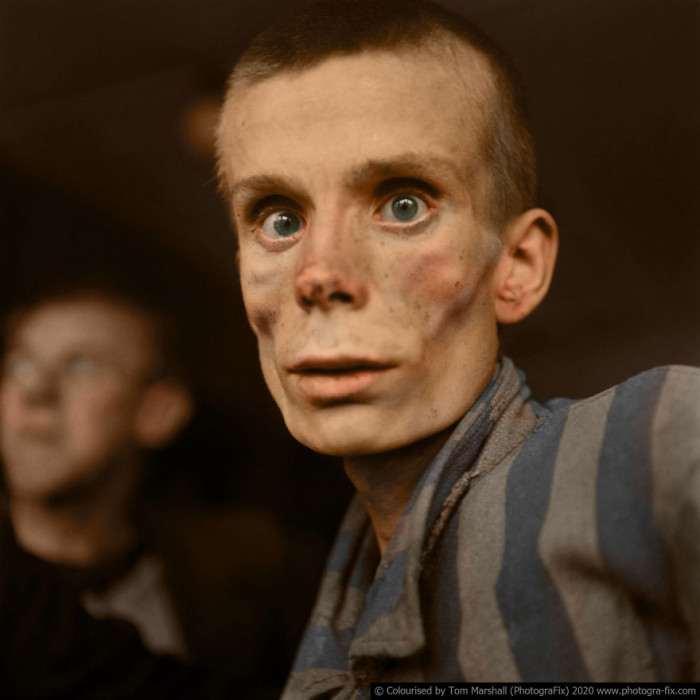 PhotograFixUK
PhotograFixUK"One of the many prisoners of the Ebensee concentration camp in Austria."
He continued, "I had to give myself time to do something else and try to switch off while working on these photos as they made me angry. I felt sicker as the pictures came to life, but I feel it was an important thing to do, to remind people – especially younger generations, that this happened and that it’s not that far back in history."
It is indeed difficult to view the photos and videos that we still have available to us of the Holocaust, but it should be done. We should see the atrocities.
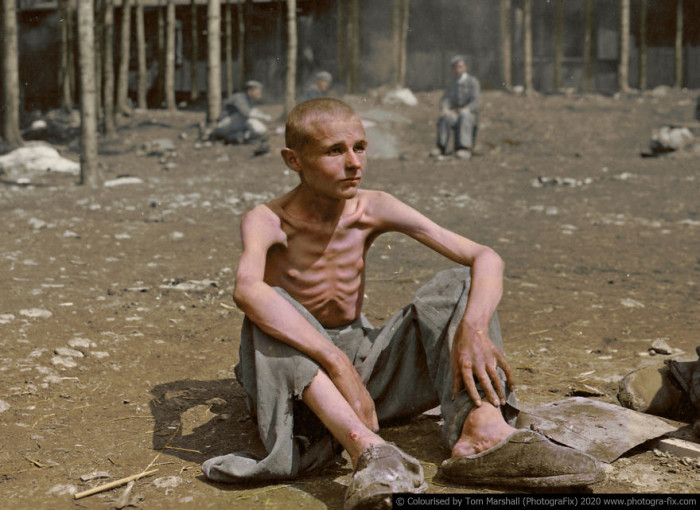 PhotograFixUK
PhotograFixUK"My Great Grandfather Charles Martin King Parsons took this photo as he was a chaplain with the British Army and he entered Bergen-Belsen prison camp in April 1945.
The camp was rife with typhus, and once the large wooden huts had been cleared of the surviving prisoners, they were burnt to the ground in May 1945."
Tom is aware that his project, like all other projects that continue to highlight the reality of The Holocaust, is important. He says: "It is so important, especially as the years go on, that we do more to bring the past to life, and keep images like these relevant and shocking, so this never happens again."
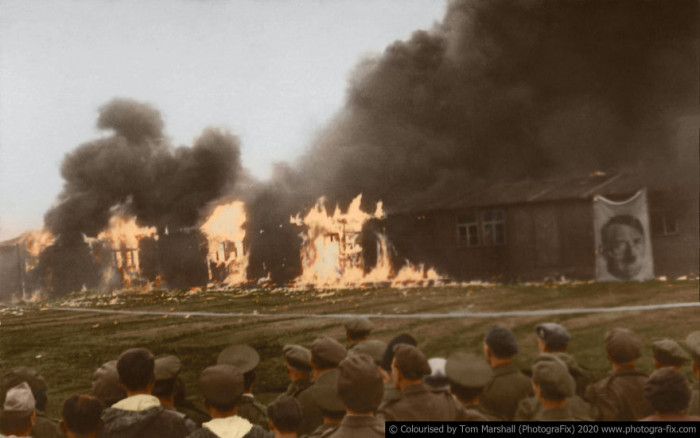 PhotograFixUK
PhotograFixUKLike many people affected by the horrors they saw during the war, my Great Grandfather never really spoke about his experiences at Bergen-Belsen and these photos show why.
He also took a series of photos including the mass graves around Belsen which I did not want to colourise as it didn’t feel like the right thing to do. These photos can be seen here.
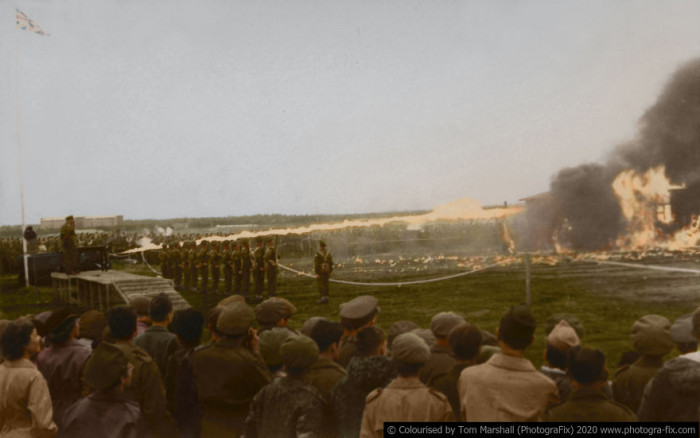 PhotograFixUK
PhotograFixUK"One of the victims at Bergen-Belsen was this young woman, her face still bearing the scars of a terrible beating by the SS guards."
Photos in black and white are not bad, but they don't provide the full scope of the imagery. Tom explains the complexities of his project, "The colourising process was also different as these people were close to death by the time of their liberation, so painting skin tones was utterly different. In colour, you can see the bones and the pale, bloodless skin, and even young men look older with greying hair and dark patches around their eyes."
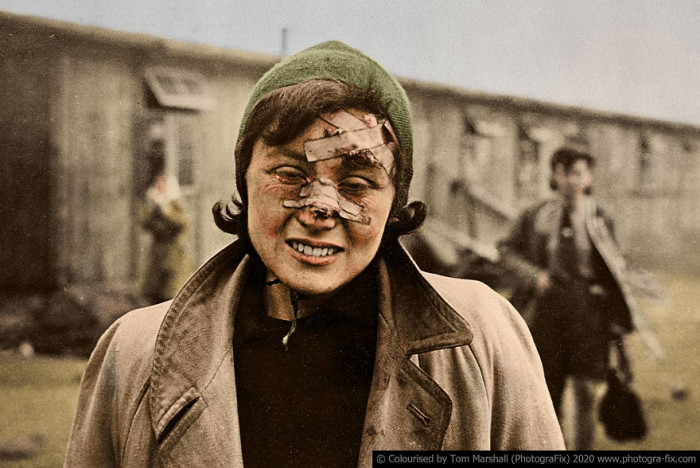 PhotograFixUK
PhotograFixUK"This photo shows a young Jewish refugee, rescued from a concentration camp, resting up in a hospital bed in Malmö, southern Sweden in 1945."
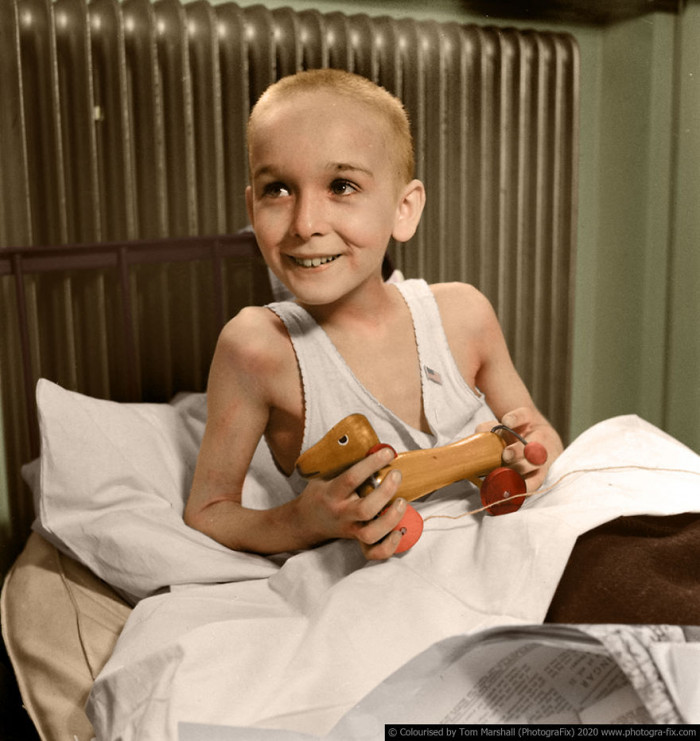 PhotograFixUK
PhotograFixUKYou can check out more of Tom's work on his Facebook, Instagram, and website.
If you want to see more examples of how people have honored the memories of Holocaust victims, take a look at this series on the Lidice Memorial.
Please help keep the memory of the Holocaust in the public eye and consider sharing this story and Tom's work.





